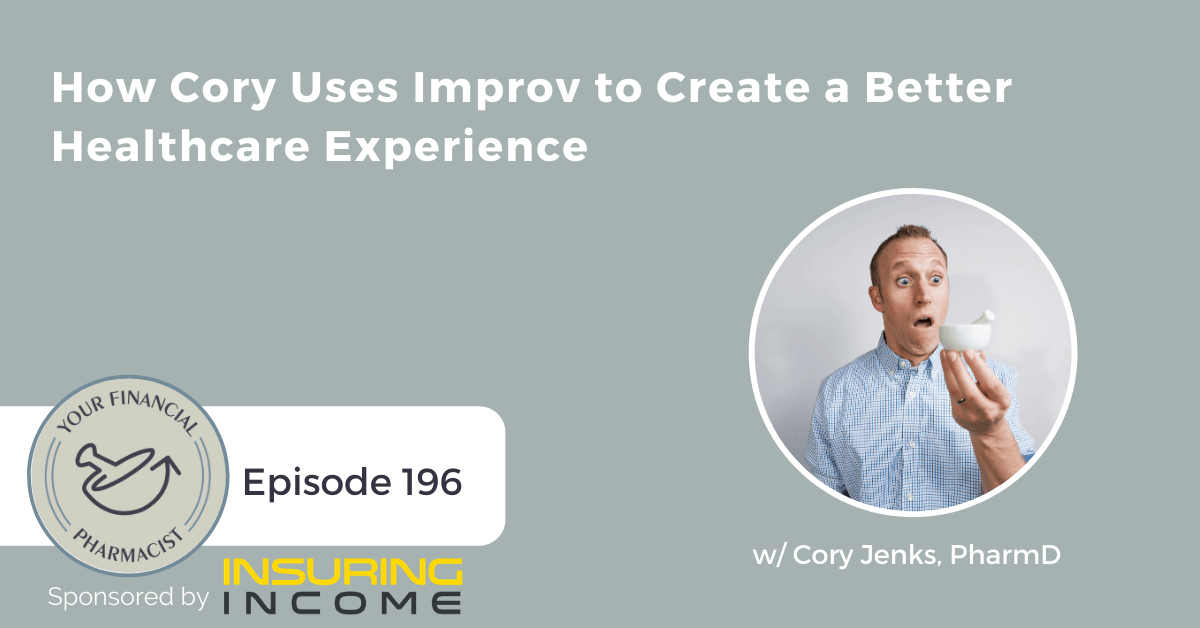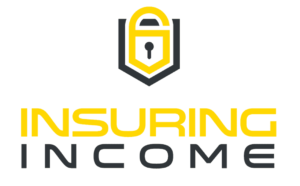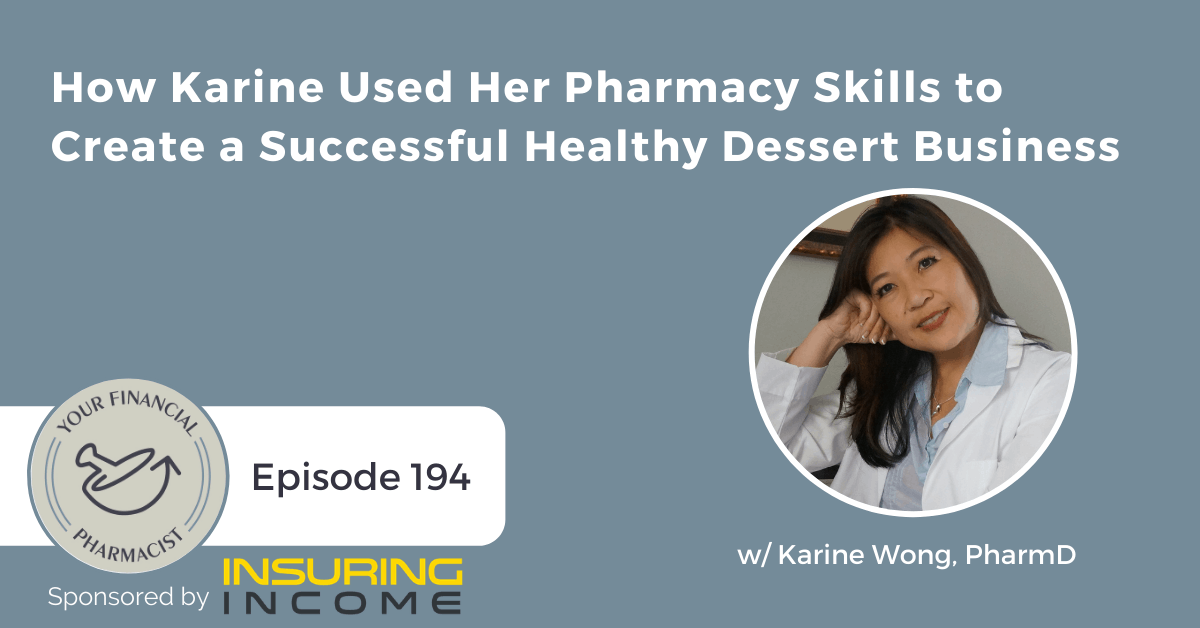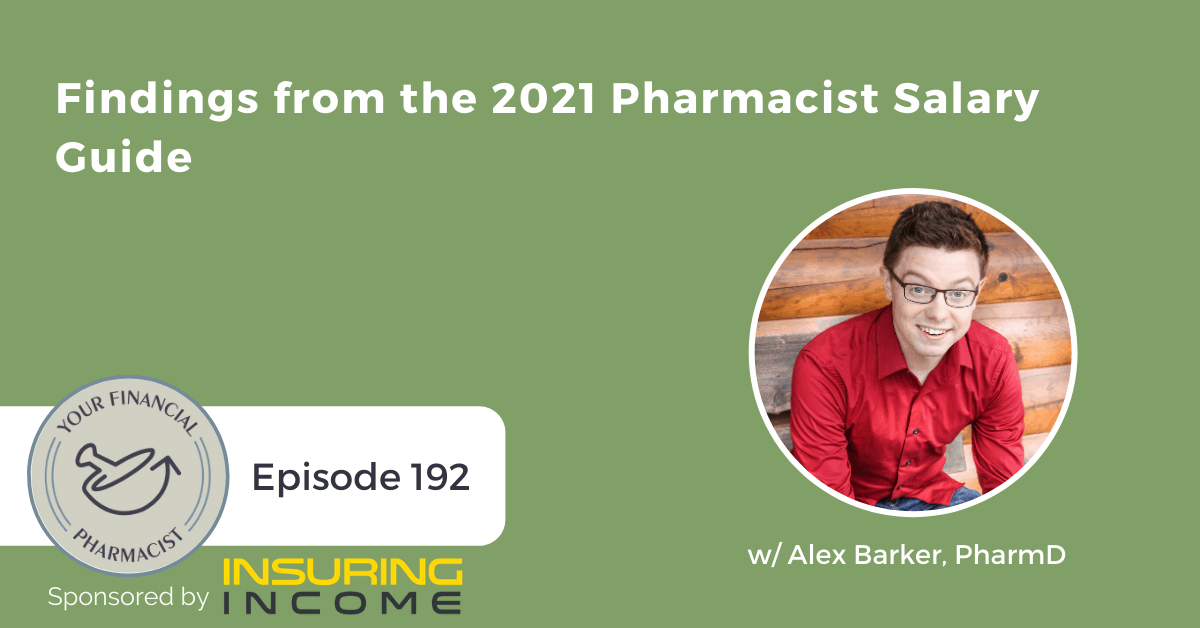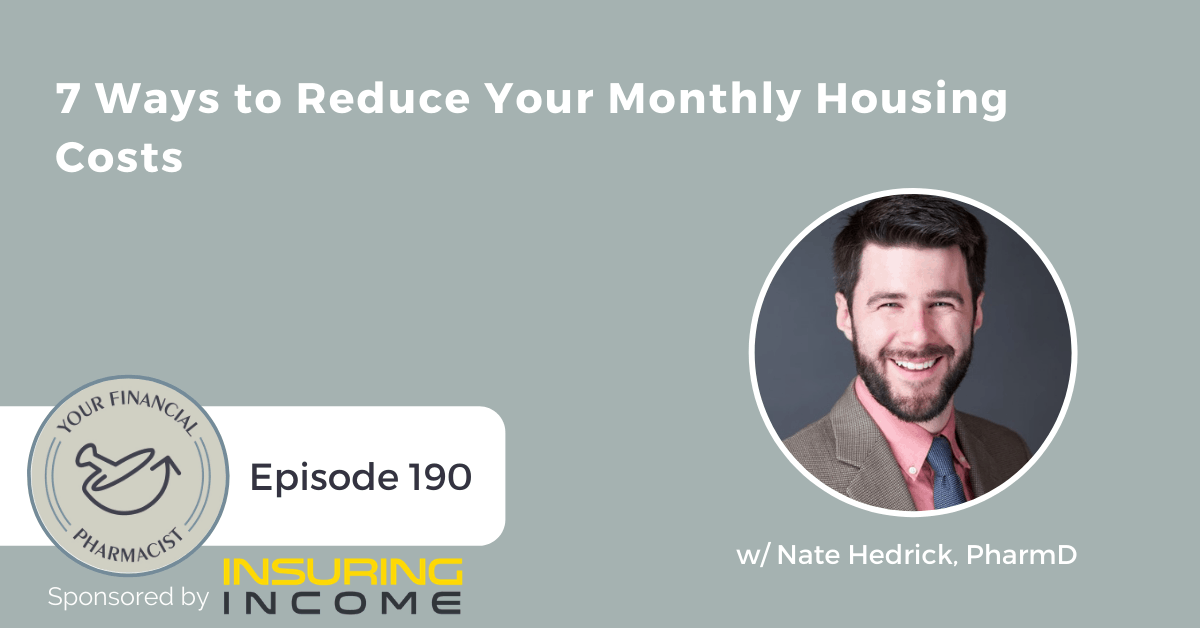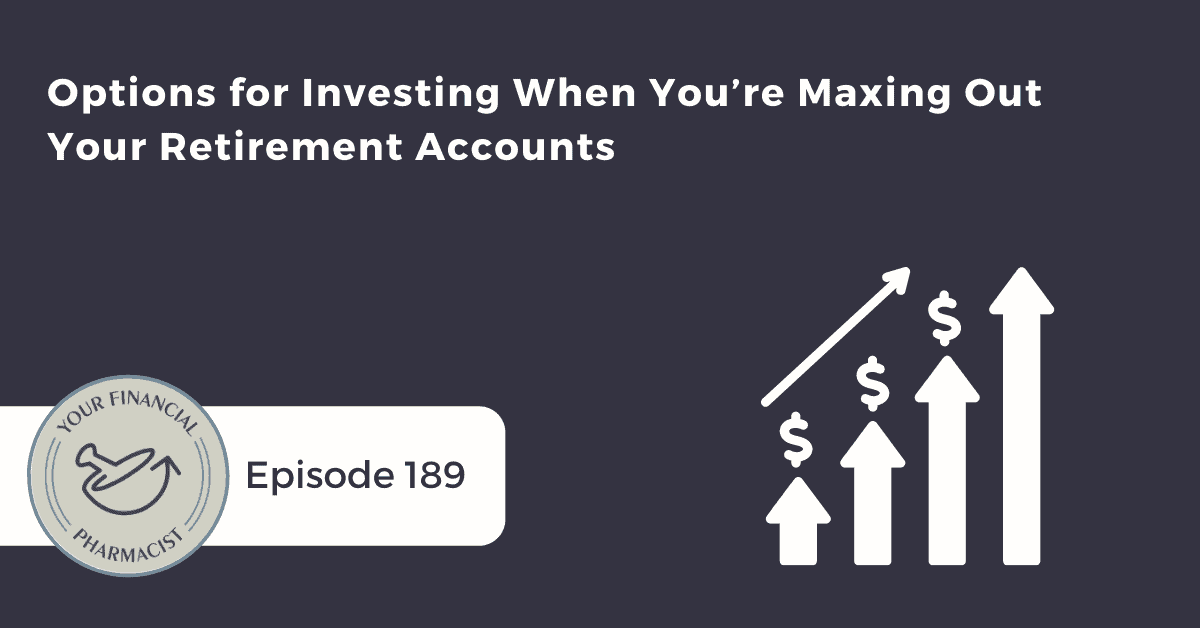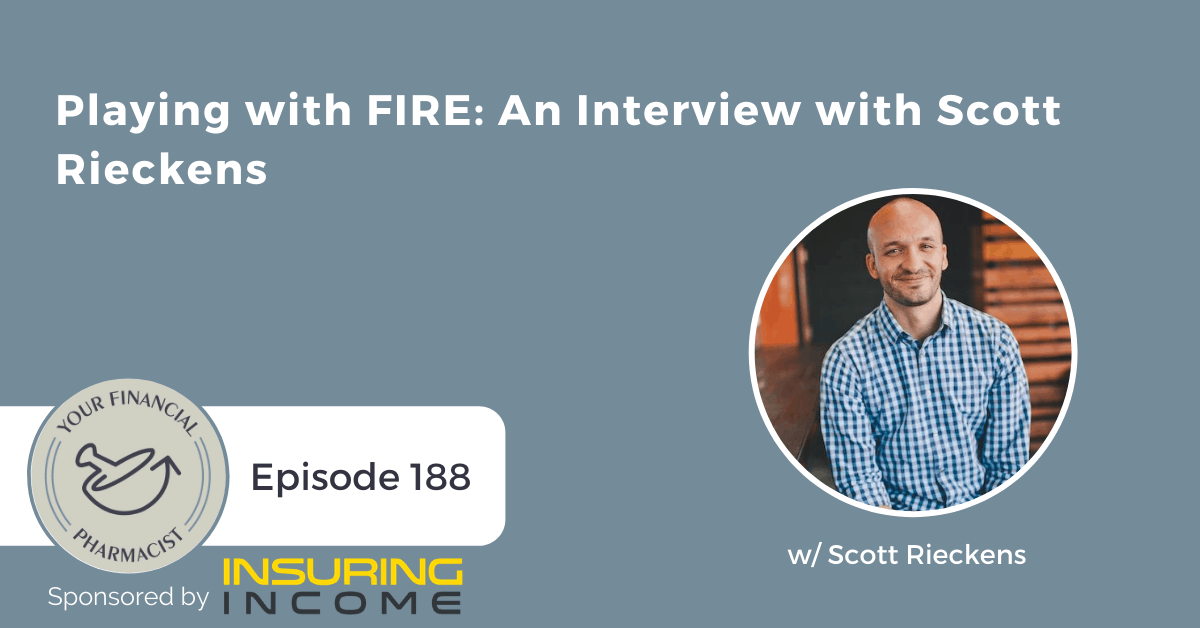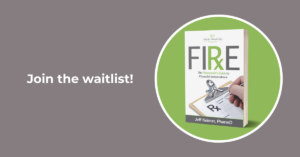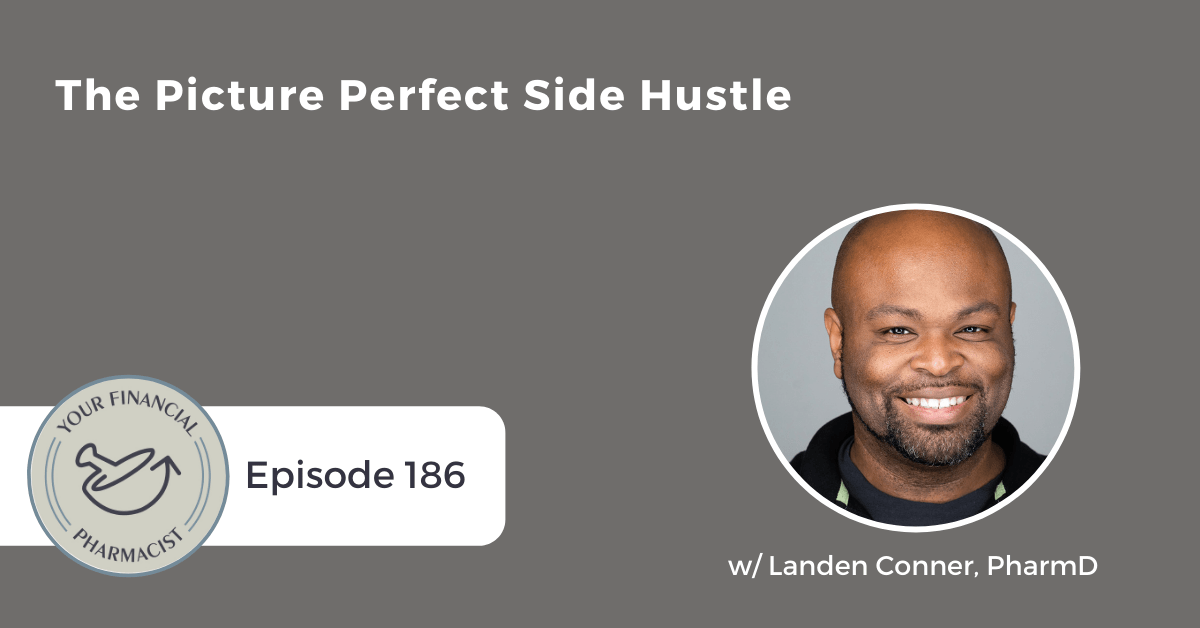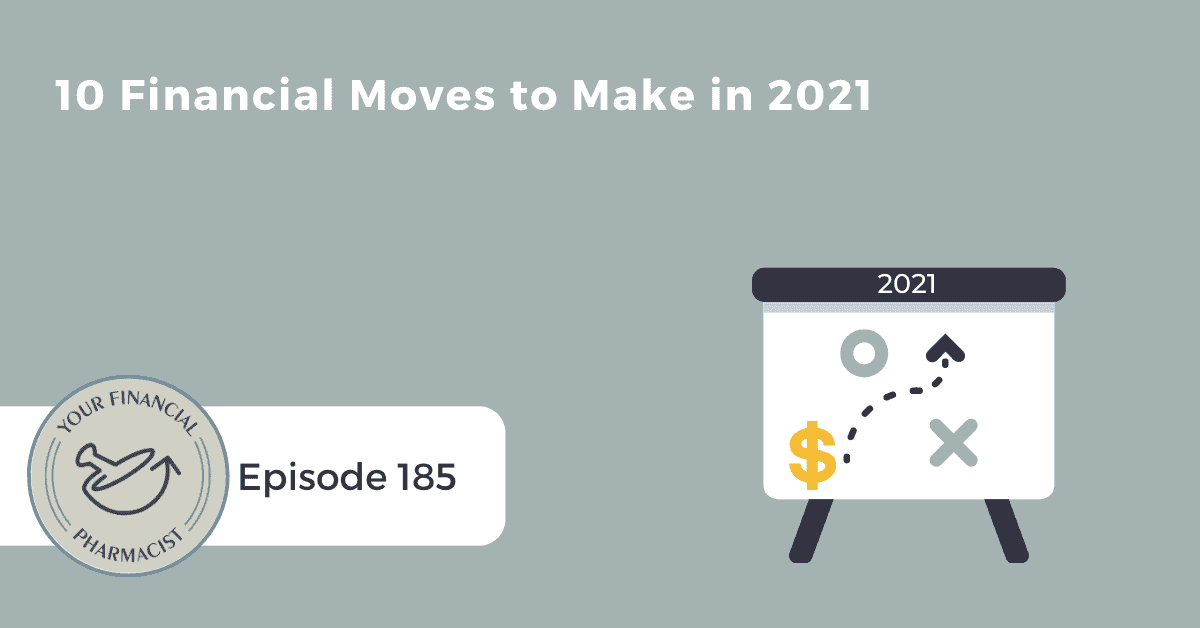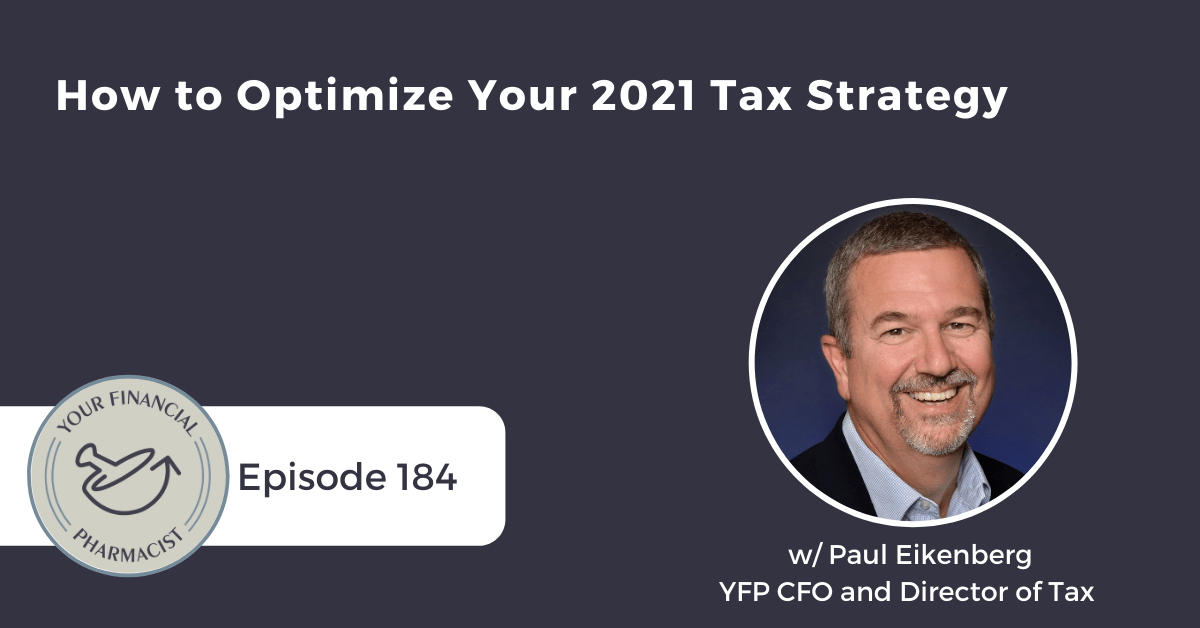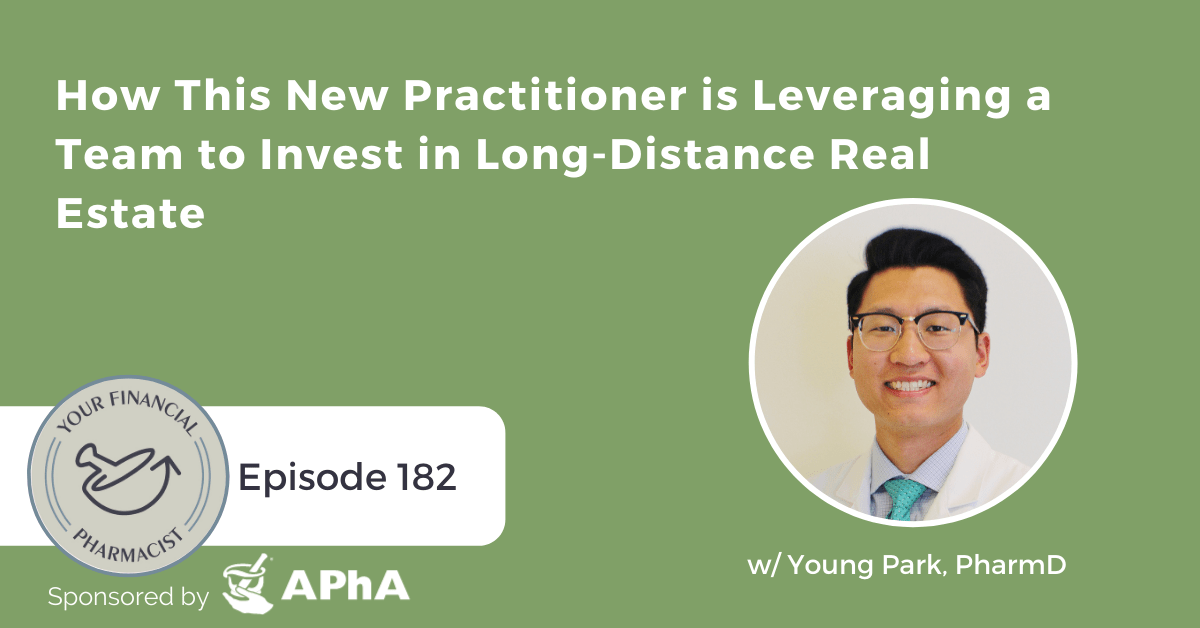How Cory Uses Improv to Create a Better Healthcare Experience
On this episode sponsored by Insuring Income, pharmacist, improv comedian, and motivational speaker, Cory Jenks, joins Tim Ulbrich to talk about how and why he got started with this side hustle, how it has improved his ability to connect with his patients, and how you, as a pharmacist, can apply the valuable skills of improv comedy to create a more adaptable, empathetic, and humanizing healthcare experience.
About Today’s Guest
Dr. Cory Jenks earned his PharmD from the University of South Carolina in 2011 and completed a PGY1 residency at the Southern Arizona VA Healthcare System in 2012. His past pharmacy experience has included time as a retail pharmacist, outpatient clinical pharmacist, and inpatient clinical pharmacist. Currently, he practices as an Ambulatory Care Clinical Pharmacy Specialist where he applies his passion for lifestyle interventions in the management of chronic disease. Cory is also an accomplished improv comedian, having started on his comedy journey in 2013. Since then, Cory has coached, taught, and performed improv for thousands of people. Today, Cory travels the country (or at least Zooms around) teaching other healthcare professionals how to apply the valuable skills of improv comedy to create a more adaptable, empathetic, and humanizing healthcare experience. When not working or performing improv, Cory enjoys playing racquetball, basketball, and golf, exploring the science of disease management through lifestyle, and is currently earning his Master’s Degree in “Dad Jokes” with the help of his two sons Jacob and Henry.
Summary
On this episode, pharmacist, improv comedian, and motivational speaker, Cory Jenks, joins Tim Ulbrich to talk about his side hustle in improv comedy. Cory details his journey in improv as a curious student, his experience as an improv coach, instructor, and performer, and how improv comedy aligns with his profession as a pharmacist. Through his various stages of development as an improv comedian, Cory noticed his ability to more easily connect with his patients, and his professional satisfaction as a pharmacist grew.
Cory walks through the mental shift to positive from negative, outlining the importance of applying the improv 101 phrase, ‘yes, and…’ in his life as a pharmacist. Because of the skills learned through improv, Cory tells us that instead of dreading difficult cases or patients, he began to see each experience like a puzzle to solve.
Cory further explains how, not only his own experiences with improv but also the experiences of those around him and those who he has taught, have inspired and motivated him to share exactly how improv comedy can be applied in the healthcare professions. Through nationwide workshop facilitation and public speaking events, Cory is able to reach healthcare professionals with his message – to create a more adaptable, empathetic, and humanizing healthcare experience. He notes that balance, an open line of communication with his wife, and the ability to dedicate time to his passion projects have contributed to his success.
Mentioned on the Show
- Insuring Income: Get Quotes and Apply for Term Life and Disability Insurance
- YFP 134: One Couple’s Coast FI Journey
- Improv Rx
- What is ImprovRX?
- American Journal of Pharmaceutical Education: Improvisational Exercises to Improve Pharmacy Students’ Professional Communication Skills
- Cory Jenks Blog
- Cory Jenks: Pharmacist, Improv Comedian, Speaker
- Connect with Cory Jenks on LinkedIn
- Follow Cory Jenks on Twitter:@coryjenkspharmd
- Connect with Cory Jenks on Facebook
- Connect with Cory Jenks on Instagram: @pharmacomedian
- Email Cory Jenks: [email protected]
Episode Transcript
Tim Ulbrich: Cory, welcome back to the show.
Cory Jenks: Hey, thanks for having me. It’s a thrill, it’s an honor, it’s a privilege, and I’m excited to be back.
Tim Ulbrich: Glad to have you back. And last time we had on the show was Episode 134, which aired in January 2020. Hard to believe more than a year ago, and a lot has happened since January 2020. Who would have known at that point we had a global pandemic in front of us? And in that episode, we talked about the journey that you and Cassie were taking towards Coast FI and some of the steps that you had taken or been putting in place towards financial independence. So how are you guys doing? What’s new? Give us the update.
Cory Jenks: Well, everything went according to plan, right?
Tim Ulbrich: Right.
Cory Jenks: It’s like, we’ve got this podcast recorded, we’re going to have a great 2020. It’s our year. And then COVID hit. But I think all things considered, we really have counted our blessings. I think being in a strong place financially set us up to weather that storm as well as we could, had hoped for. We had our second kid in June.
Tim Ulbrich: Congratulations.
Cory Jenks: Good time to have a kid, right in the middle of a pandemic, right? We’re home anyway, so we have to hang out with them. And I had a chance to continue to work and grow on my little business, which I think we’re going to talk about today. And Cassie’s had the opportunity to drop back further into a part-time role. So that was what that Coast FI journey allowed us to do was to reduce some of that income from her to spend more time with the kids. And she actually got an opportunity to work a little extra on a different, more passion project working on lifestyle for disease management and diabetes reversal. So that’s something that she’s been starting in the last few months that being able to go to part-time has afforded her the opportunity to pursue that passion. So guiltily good. We’re guiltily good in this 2021 now.
Tim Ulbrich: Well, we will link back to Episode 134 in the show notes. And I hope our listeners will take a listen back to your journey, really an inspiring one. And when we talk about financial independence or even FIRE at large, standing for Financial Independence Retire Early, I think sometimes we think about it as a finish line. And really, it’s more about the journey. It’s a trajectory. And I think about your story as an example of that trajectory, of that evolution. And so we’re going to talk to you about what that has allowed you guys to do as a family. Obviously a lot has changed, the addition to your family obviously with Cassie’s role changing, the work that you’re doing with ImprovRx, and all of that is in part possible because of the steps that you have taken related to the financial plan. So excited to talk about your side hustle, ImprovRx, and the work that you’re doing to help other healthcare professionals create a more adaptable, empathetic and humanizing healthcare experience. So before we dive into the nitty gritty of ImprovRx, remind us about your pharmacy journey, where you went to school, the work that you’re currently doing now, and even the other work that you have done as a pharmacist prior to your current role.
Cory Jenks: Sure, yeah. So I am coming up on my 1-year anniversary of graduating from the University of South Carolina, so go Gamecocks.
Tim Ulbrich: Go Gamecocks.
Cory Jenks: I’m wearing my Gamecock Pharmacy sweatshirt for all the — this is an audio podcast, so perfect segue there.
Tim Ulbrich: Yes, I can see it here.
Cory Jenks: Yeah, thank you. Yeah, it’s a beautiful garment color. So graduated 2011, and I grew up in Tucson, so I went out to South Carolina for pharmacy school because I just loved student loans and out-of-state tuition. And I ended up coming back to Tucson to do a residency here at the VA in Tucson, where I have been ever since. I’ve worked anywhere from in ambulatory care, inpatient pharmacy, I’m back in ambulatory care now as a clinical pharmacy specialist doing chronic disease management. So really cool job, getting to help manage patients’ health. And I have a real passion for helping sort of reverse the chronic disease, not just manage them but do my best to get patients off their meds and living a healthy life. And in between, I’ve worked a little bit of retail, I’ve worked in a community health center. And so I’ve kind of — it’s like the Johnny Cash song, I’ve been everywhere in pharmacy. So yeah, that’s where I find myself today in my day job.
Tim Ulbrich: And we’re going to make that connection here in a little bit for folks that are wondering, we’re going to provide that bridge between improv comedy and the healthcare practitioner and how that relates to the experience for the patient. Now, I know some funny pharmacists, Cory, but I don’t think about pharmacists and comedy that often and the two of those coming together. So give us the back story. Why improv comedy? Why did you start it? What drew you to that area? And tell us a little bit about the work that you’re doing.
Cory Jenks: Sure. So growing up, I loved Simpsons, I loved Saturday Night Live, I loved watching comedy. And so this was back before you could DVR stuff. You young punks in pharmacy school with your on-demand and your DVRs, so you had to watch the show on Saturday or Sunday night, and you’d talk about it with your friends the next day.
Tim Ulbrich: That is right.
Cory Jenks: And I loved it. And I mean, I enjoyed school, good at science, pretty bad at sports, that’s why I pursued pharmacy and not trying to play baseball. But always had this love of comedy. It’s always been a part of my life that I think as a pharmacist, a good laugh really is good medicine and something I enjoyed. And in undergrad and pharmacy school, there was an improv group at the University of South Carolina that I went and saw once, was like, ‘Oh my gosh, that’s amazing.’ And I didn’t do it because I was very committed to my academics. So I kind of put that dream and enjoyment on hold but always kept that sort of fire for comedy. And then when I finished my residency in 2012, Cassie was like, ‘Hey, you’re just kind of hanging around. You have this time on your hands. What do you want to do with it?’ And so I had a birthday coming up, and so I said, ‘Well, I’ve always been interested in trying to play the guitar or do improv comedy.’ So give me one of those two lessons or classes for my birthday. And so if you heard me play guitar, you would probably assume I did the improv. And that is correct. So it was 2013, I took my first improv class. And it was a local theater here where I live in Tucson. So just starting up, so the guy who’s now one of my best friends was — took a class, took another, and it was a matter of, ‘Hey, you have a pulse and you’ve taken these classes. We need people to perform. I’m trying to grow this theater. Do you want to do it?’ Yes. Love it. Let’s do it. Perform, get on stage, and it’s really a thrill. I had a ton of fun performing it. And then eventually, ‘Hey, Cory, you’ve been doing this a couple years. Can you help me teach my classes?’ Because he was scaling his business. So sure, I love teaching this. And so I got a chance to learn the intricacies of teaching it. And eventually, it was, ‘Cory, I need someone to run my comedy school. You’re a very organized pharmacist. Use those skills to organize my curriculum.’ Sure, let’s do it, would love to do that. And then while I was doing this and sort of bringing my wife back into it, she’s the real superhero of the whole story. She was in nurse practitioner school. She was busy every night, so I got my improv Master’s degree during her Master’s degree of her getting her nurse practitioner degree. So I was down at the theater 4, 5, 6 nights a week coaching, teaching, performing. And it’s a blast. It was fun. And along the way, I realized that these skills that I learned as an improv comedian, listening, communication, teamwork, empathy, all of these soft skills that we sort of talk about but don’t really find a way to teach or measure became better. I was connecting with patients, I was adapting, I was feeling like I was a better listener. And so as we had our first kid in 2018, as much as I enjoyed being down at the theater performing for 5-10 people in a very small crowd sometimes, the heat of the Tucson summer, I would get paid to teach classes but not quite the rate as a pharmacist, if that makes — if I’m making sense there. So and when you’re away from your kid and your family, you want to make sure you’re really getting a lot out of it. Not that I didn’t get a ton out of it, but I was kind of thinking like, what’s my next step with improv? How can I push this to another level? And auditioning for Saturday Night Live is just on the cards because I’m not moving to LA or New York or Chicago, abandoning the family to pursue this dream, which I don’t — it would be cool if I somehow SNL. I think I’d have to be some sort of unlikely national hero of something to be famous enough to do it, but then I realized, oh, I’m a pharmacist. It’s helped me as a pharmacist be better. What if I push it in this direction of applying it to healthcare? And so that’s where I found myself a couple years ago as I started the business of speaking and doing workshops.
Tim Ulbrich: I love the creativity in finding something that you were passionate about and connecting it to your skill set and experience and what you are trained to be doing as a pharmacist. I think sometimes we talk about side hustles or businesses, sometimes they’re connected, sometimes they’re not. And I think probably many folks like myself when I first heard about you and the work that you’re doing with ImprovRx, I was trying to find the connection, trying to see where that connection may be. And like yes, we can always use an extra lap, but when we talk about enriching our experience and interactions with patients and enriching the healthcare system at large, we all know there’s a lot of room for improvement. We’ve all been through it as a patient, perhaps some at the different levels than others. So I really start to see the connection of how pharmacists can benefit from some of the skills and training that we’ll get to hear about in a little bit. So dig a little bit deeper for a second on the connection between improv comedy and the ability to connect with patients as well as just your professional satisfaction as a provider. You mentioned some of the softer skills, but take me in the room. You know, Cory, I’m working in ambulatory care, I’m seeing patients, how do you begin to apply this personally in your patient care encounters?
Cory Jenks: Yes, so improv is actually — I would consider it very similar to a healthcare encounter.
Tim Ulbrich: Absolutely.
Cory Jenks: And here’s why. So taking it a step back, when I go and practice improv when we’re not in a pandemic and can gather, I tell my parents, ‘Hey, I’m going to rehearse improv.’ And they’d say, ‘Cory, it’s all made up. What are you rehearsing?’ And I’d say, ‘Fair point. But improv, like a sport, you have specific skills.’ Like basketball, you ought to practice dribbling. You ought to practice defense. You’ve got to practice your — if you’re me, you’re practicing your slam dunks all day long. You’re just flying above the rim, right?
Tim Ulbrich: Absolutely.
Cory Jenks: Well, with improv, we’re practicing characters, voices, playing on teams’ different format of improvisation. Like I perform on an improv hip hop team. I rap. I do improvised rapping. Much like an improv scene, we do have certain rules within improv. And I don’t need to get into the weeds of that, but there are rules within improv that help guide us in these scenes. Well, sports you have specific rules and then in healthcare, obviously we have this specific set of rules. But with improv scene, every basketball game, every interaction with a patient, anything can happen within that timeframe. No two basketball games are the same. No two improv scenes are the same. And certainly no two patient encounters are ever the same. So you’re able to take those skills of listening, being 100% in the moment, and adapting to what that patient is telling you and continue to provide them the best outcome. One of my best examples of this was one of my patients I was managing for diabetes. And he came to the room, was just demanding a prostate exam so he could get Viagra. Like this was just his connection. He was told he needed to get that checked out to get his Viagra. And I — how do I navigate — like I never had that question on a test in pharmacy school. No one gave me the “patient demanding prostate exam, what do you do?” but also continue to do the job that you’re assigned to do, which is manage their blood sugars but also make sure that he’ll trust you in the future to take care of what you need to do. And so pardon the graphic example of the patient, but the way I was able to navigate it, I was — the two words of improv are ‘yes, and.’ Those are the basic words. If you ever want a free lesson, ‘yes, and’ are the two words. We agree and build together. So how can I say yes to this patient who’s wanting a prostate exam from me, a pharmacist, who decidedly went into pharmacy so I did not have to do exams like that? And so I said, “Yes, I could give you a prostate exam. And you wouldn’t like it, and I wouldn’t like it. And you wouldn’t get the meds you want.’ So let’s focus on your blood sugar, and you talk to your doctor about that prostate exam. He said, “That’s great idea. Let’s do it.” So it was a way to connect with him without fighting him, right? I think a lot of times consumers, we as consumers will fight with the healthcare system. We agree, we get on the same page, and we work together as a team with your patient rather than seeing it as an adversarial issue when they bring something off the wall to your office.
Tim Ulbrich: Yes, and I love that. What a tangible takeaway for folks that are interacting with patients. So is ‘yes, and,’ is that like a staple of improv comedy, improv training? Like when you’re teaching that and you saw that connection with the healthcare, is that something that’s commonplace?
Cory Jenks: Literally like Day 1 of Improv 101, you learn this idea of ‘yes, and.’
Tim Ulbrich: Really?
Cory Jenks: So if you’re doing an improv scene and then you say to me, “Hey, we’re on the moon and it’s so beautiful.” And I say, “No, we’re not. We’re in a bounce house,” well, I’ve completely negated your reality. We have to rebuild everything. And so that scene grinds to a halt, the energy stops. And I have to explain why I thought we maybe we’re on the moon. But if I say, “Yes, and it’s so beautiful up here,” or, “Yes, and we only have 30 seconds of oxygen left,” we’ve now agreed to our reality, built on a detail or a consequence and have gone down this journey together rather than trying to fight and have this adversarial reaction. And in healthcare, that’s what we’re doing. We want to build together in the moment. That’s all we’re doing with our patient. So to get the outcome, improv is to get a laugh, with our patients it’s to optimize their health. And I also am a big proponent of the experience because we don’t get to control their health all the time. Sometimes the diagnosis is beyond our control. So we can at least agree to their reality and build together.
Tim Ulbrich: I love that. And one of the questions I like to ask folks — and especially, Cory, of the journey like you’ve had is when you have such a clearly defined vision of where you are going and you have obviously thought a lot about how this interest in improv comedy can connect to patients and create a better healthcare experience, that doesn’t just happen without a specific passion, without a motivation or without a why, whatever you want to call it. Was there an “Aha!” moment when you realized that you could help other healthcare professionals have a similar experience, develop their skills to better their connection with patients and ultimately better the healthcare system? We know there can be improvement there as well as improving their own satisfaction as a healthcare provider. One of the things we hear, of course, from healthcare providers, you know, I’ve lived it, you’ve lived it more than I have, I talk with many pharmacists, physicians, veterinarians, etc., I hear, “You know what, I’m burned out.” And so there is also this piece of provider satisfaction in addition to the patient experience. So what was that “Aha!” moment for you where you saw this connection?
Cory Jenks: I’ve just done all of this talk of ‘yes, and’ and how I would agree with you. And I have to say, it wasn’t so much an “Aha!” moment as a slow boil or a slow burn. In my own professional life, I started to realize like I didn’t come home as cranky. I enjoyed the — like when someone would give you, ‘This patient is difficult,’ I stopped saying, “Oh no,” and started saying, “Cool. What are we going to do here?” Right? It’s that mindset shift that it comes — it’s solving a fun puzzle versus dreading not having the answer. So I think that was part of the puzzle. My wife Cassie went through improv training and she was like, “Oh, wow, this is really useful as in my career as a nurse practitioner. I enjoy this.” And then I’ve had — we’ve had nurses and I have a physician who’s now a friend here in Tucson that went through the training. And his like, he was like pure “Aha!” Like every class was like, “Oh my gosh, I could use this with my patients. Oh my gosh, I’m too left-brained. Oh my gosh, I need to say yes more.” And so I think seeing the light bulbs go off in those that I have taught through our classes in Tucson, I mean, you get all walks of life. You get — in our theater, we joke we have a rocket scientist. He’s an engineer. We have nurses, lawyers. But then we have the typical theater artistic folks who live with that right brain a bit more. But it’s just that consistent reaction from people who buy into the ‘yes, and’ philosophy. So I really see it as more of a philosophy than just a rule of improv. I try to live that ‘yes, and’ life as much as I can. But seeing those light bulbs and “Aha!” moments is just energizing back to me. And I realized, oh, this is an opportunity to take what I do 40 hours a week and what I do on the weekends and improve that 40-hour life, not just for myself but I think we could do something for the other people that, as you say, we struggle. Healthcare is hard. Like, to everyone listening, kudos to you. We have hard jobs. It’s OK. Admit it. So how can we make those jobs a little less hard and a little more rewarding? And I think this is one of those avenues to find that satisfaction.
Tim Ulbrich: So I have to ask as a father myself, you know, I suspect dad jokes are a regular. Is that fair? I mean, are the dad jokes getting better? Are they getting worse? Where do the dad jokes come in?
Cory Jenks: I give myself like a 6.5 out of 10. So like the littlest one just turned 9 months old, so he just sort of like, I smile at him and he laughs. So the bar is low for him. And my 3-year-old is just getting a little sense of humor and a little playfulness. But I can make Cassie’s eyes roll pretty good with a lot of my dad joke humor. And just kind of circling back to what you said, you say you don’t know many funny pharmacists. The interesting thing about improv is that you don’t have to be funny to be good at it. I think improv is perfectly suited for pharmacists because it requires you to listen, be in the moment. And if you are smart, which pharmacists objectively are very smart, you can be really good at improv because you learn the patterns, you learn the rules. And as kind of left-brainy pharmacist as that sounds, once you learn that, you can play up and find the funny. You can develop that sense of humor. And so if you’re listening to this at home saying, ‘Well, I’m not funny,’ first off ‘yes, and,’ yes, you can be funny. You can do this. And so that’s my bit of pushback. I think that the smartest people make some of the best improvisers. So just brushing my shoulder off here.
Tim Ulbrich: So this connection of obviously bringing your interest in improv comedy or experience as a healthcare practitioner, your opportunity is, I suspect, as a patient, perhaps a caregiver, other experiences, recognizing that this could be done better. Insert ImprovRx, so an opportunity to train other healthcare professionals. So let’s talk about more of what you’re doing with ImprovRx. What do you offer? You mentioned to me before we hit record that you’re going to be doing an upcoming session for a Rho Chi induction. So give me some examples of things like that. What would it look like to the person in the room when you’re doing a workshop? What does this experience look like for pharmacy students?
Cory Jenks: Yeah.
Tim Ulbrich: Give us some more of the nitty gritty of what these types of sessions would include.
Cory Jenks: Definitely. So I offer basically — I’m an improviser, so I can adapt to whatever session or issue or event you’d like. But I can do a good old fashioned speech or a talk on it where I’m talking to your crowd, revving you up, inspiring you, pretty much what I’m doing with the audience today, just giving you just a bunch of motivation and excitement about what improv can —
Tim Ulbrich: I’m ready to go.
Cory Jenks: Yeah, like I’m glad there’s no brick walls in front of you because you might run through it.
Tim Ulbrich: That is great.
Cory Jenks: But I think my bread and butter really are the workshops. So what I do with those is I provide, depending on the workshop — and I have a menu of those depending on what the event calls for, what the particular organization wants. So I could either get right into some basic rules and we just get in and play. And what we do is we have the participants doing improv within 10 minutes. You’re doing scenes, you’re building things together. And then what we do, regardless of those different workshops, is we break down what happened in those scenes. What happened with those skills? What made them work well? What didn’t work well? And then how do we turn this into making ourselves better healthcare professionals. So how are you going to take what you did during this particular game and utilize it to be more in the moment with your patients? And so whether it’s something where we jump right into the improv or whether we do a little bit of background, a little presentation on some of the literature that supports — because ImprovRx is evidence-based comedy. There is literature supporting the use of role play and improv in education and pharmacy and medicine. So we’re pharmacists. We like to have that data to show that what we’re doing is worthwhile. And so there is — so I can dig into the data, give you the good background, and then we jump into the fun. And what I think the most important thing that comes from this is that people are going and taking risks, they’re trying new things, and there’s no consequences. Like in pharmacy school, for example, you can take a test and if you fail the test, you fail the test, right? In improv, if you do a scene that’s not funny, the scene is over, we move on, it’s disposable comedy. It’s beautiful. And you can learn that lesson in the moment. And I think that’s something that students — it’s really resonated with students because they are under pressure 24/7, get the grades, go to residency, get your job, get your student loans paid to tie it back here to YFP. So for an hour, we’re going to try something. It could be difficult. We’re going to be growing some skills. But the thing that I love — and I’ve been doing all these virtually right now because of COVID — is I’m looking at my screen and I see smiles on faces of students trying new things that are hard. And when do we have those moments in life where we get to try something and have fun doing it? And I think that’s the — like at worst, we come out of this having fun. And at best, you have fun, you challenge yourself, and you realize that those limiting beliefs that I’m not funny, that I can’t listen, that I can’t create, are not true because there’s so much more lurking — in a good way — inside of all of us as healthcare professionals that are waiting to be there to help our patients.
Tim Ulbrich: You know, I’m connecting back to my experiences in academia and even as a student where while we have come a long way in providing I would say more digestible learning experiences for students in terms of not as high risk of assessments, making things more spread out, smaller, lower risk and so forth to help foster the learning experience and take some of the anxiety out of it and an effort to try to help students manage stress and other things that they have going on, I suspect for pharmacy students listening, they would still say it’s a very pressure-inducing environment. And you can see it among students currently. They feel the stakes are high. And they certainly can be in a session like this and see value from this. And I can see it happening in a classroom, in a student organization event, as a part of another event on campus, whatever that would look like, where there’s just an opportunity to grow, to have professional development, but to have fun and to do it in a safe place. I mean, what an incredible experience. So if I’m tracking with you correctly, Cory, these hands-on workshops that you described as kind of your bread-and-butter type of offering would be provided to a college of pharmacy or offered at a national organization or a state organization or an organization like Rho Chi. Is that correct?
Cory Jenks: Perfect. Yeah, exactly. Those are all places that I’ve done this. I’ve done it at a state association, I’ve done it at a national meeting for a — I’ll be doing one at a national meeting for a pharmacy organization here in a few weeks. And I’ve done them in a small group with Rho Chi. And one thing that I actually did too was a pharmacy residency. So something — you think of pharmacy residents that the high stakes, the pressure —
Tim Ulbrich: Absolutely.
Cory Jenks: So teaching them adaptability, some resilience, and having fun while doing it. So I had a lot of fun doing this with some pharmacy residents as well, doing it virtually, playing together and learning these skills in like a very — I hate to say zero gravity environment because it kind of — I don’t want to cheapen what I’m doing, but it’s just from a world where if you’re a pharmacy resident and you’re in training and you’re taking care of patients, like the stakes are incredibly high. It’s life and death, real life and death. So here’s a way to get a step away from the life and death but be more effective when those stakes are high and you need to communicate with that doctor in a life-or-death situation or that patient in a life-or-death situation.
Tim Ulbrich: Well, what is the reaction? You know, I’m thinking of my experiences with pharmacy students or other pharmacists and depending on where they are at, I can see that some might really get into this type of experience, others maybe kind of skeptical, maybe others warming up to it over time. What kind of reaction do you get from the audience during these sessions?
Cory Jenks: The beautiful thing is that it’s different with every session. So I’ve worked with student groups that they’re a little more tentative, they’re a little more self-conscious, and so it takes a little bit of we’ll say prompting from the organizer or the school to send me a private message on Zoom and say, “Hey, call on Davey or Suzy,” or whatever. And then they’re like, “Oh no!” And then there are some where it’s like they can’t get enough. Like, ‘We only have an hour? I want to go and I want to go again, I want to go again.’ And then there are the ones that they’re like, they’re really uncertain, but they do it. And then they realize, oh my goodness, that was fun. I did a great job. I had that in me. And so it’s like I said, everyone is going to be different. And that’s what makes it fun for me is that every group presents its own challenges. Some of them it’s like, we’ve got to slow this energy down, we’ve got to give someone else a chance. And some it’s like, OK, it will be more work to get you to come out of that shell. That is OK. That is my job. Let’s do it. Challenge accepted.
Tim Ulbrich: Which I think is a whole separate skill set, one I’m guessing you are continuing to hone and develop upon. I mean, there’s an art to it I think, interacting with folks, drawing things out of them, creating the experience and the environment that gives the best shot of participants engaging in the material. But it just depends sometimes on the group, on the culture, what is going to have those types of interactions, what’s going to lead to those types of interactions. And I can’t just roll by the fact that, Cory, we’re in the midst of a global pandemic where you are really just warming up to the work that you’re doing and things like traveling and being able to engage with other organizations and along the way comes a global pandemic, which I would suspect brings things like travel to a grinding halt. So for me to jump on to Zoom and to do a talk about personal finance, yeah, I would love to be there in person, but we can make it work at the end of the day. The information is the information. And I’ll try to do my best to inspire folks in that environment. Now, this, the work that you’re doing, feels like the experience that you would have with the learners in the room is so important to the outcome of the event. So talk to me about how you have been able to pivot with Zoom, with obviously what’s going on with the pandemic, and how you’ve been able to be flexible and the mindset that has allowed you to continue to press on despite the limitations that have been brought on by the pandemic.
Cory Jenks: So yeah, it’s a great, great point. I picked a wonderful year to decide to be a speaker, right? But don’t worry, what I speak on is drawn entirely out of what the energy in the room is. So no, I think that’s — you mentioned like the mindset. So one of the things we talk about in improv is that there are no mistakes, only gifts. So you don’t go to an improv show, watch it and say, “Well, they messed that line up there.” It’s not like a play where you’re expecting. You don’t know it’s going to happen. And so a good improviser will take whatever happens, whether it’s the tech person talking over your scene on a microphone, which has happened to me before, and turning it into some sort of narration of their life, we turn it into a gift. And so this past year of having to do everything remote, well, I’m an improviser. I teach adaptability. If I couldn’t adapt, you shouldn’t be dealing with me. And so I’ve been able to adapt the exercises to the Zoom or the virtual platform. It’s more of a challenge — like it is more of a challenge to get people engaged and involved, especially it’s very easy to have people just like, I want to turn my camera off and hang out on Zoom. So you have to work harder. Like in a way, it is harder to do to be able to do this virtually. But I have adapted the message, I have adapted the games, I’ve adapted the activities to make it much more interactive for those participants, even though we’re virtual. And in the world of seeing things as gifts rather than mistakes or problems, I will not anger your entire audience and say, “COVID’s been a great gift,” right? It’s been terrible for many people, myself included. Everyone has been affected by this. However, the gift of doing things virtually has allowed me to maybe reach some groups that I would not have been able to reach before. Doing Zoom sessions across the country from here in Tucson when the travel costs might have been prohibitive for a small organization. Well, you don’t have that barrier now. So I get to interact with your students, I get to share this message. And so the ability to adapt is baked into what I do. And so it’s been fun having that chance to adapt to see how these different things work and to get to talk to and interact with a bunch of folks that I might not have had the chance to otherwise.
Tim Ulbrich: Absolutely. And I think what you said is just so on point. I mean, the mindset being so important, the adaptability piece being so important, but also the opportunity to reach organizations and groups that otherwise might not have been open to a Zoom session and because of, whether we like it or not here, we are. And we are all comfortable with it now. And so you’re giving things like this a try and obviously continuing to have the impact that you want to have by reaching more folks through the technology and what you’re able to do. And you mentioned the evidence. You know, my academic perspective is thinking, when it comes to the evidence, Cory, that you reference, I know that there’s likely something there. And you specifically mention some of the pharmacy and medical literature that’s out there. Tell us more about the evidence behind some of the work that you’re doing.
Cory Jenks: Yeah, so I’ve got to give props to the University of Arizona here in Tucson. This precedes me, but there’s an article from I think the late 2000s, the late ots, I guess we call them, where they incorporated — they actually have incorporated improv into their pharmacy school curriculum. So it’s a lot of fun. I’ve been able to help out with those sessions once the world found out that, ‘Oh, you’re a pharmacist that does improv. Well, we do this improv thing for pharmacy students.’ Wow! I have a clinical specialty! Here it is, it’s improv. So I get to go participate in that. But they’ve written up the improvement in patient communication with the pre- before and after doing their improv sessions. So it’s improved subjective communication. In medical school curriculum, it again showed that it improved communication. They felt like there was a quote where I don’t feel like I have to do things off of a checklist, I could just listen to it back in the moment. And most of the medical school students, I think they got 10 hours of improv instruction in the article that I researched and read, is they felt it was worth repeating. And now, put your hand up out there if there’s any classes in pharmacy school or medical school that you wanted to repeat. It was like, I’m done with this one, moving on to the next one. So to me, that — it’s not like where we can objectively measure like, ‘You were a 7 on communication and now you’re a 9 on communication.’ But getting at that human side of healthcare, like if students are saying they’d repeat this, I think they find it valuable. And so trying to promote that evidence more so would be something that I would love to be able to continue to pursue and really with what I’m doing, trying to make that more of a reality in more places for more students to get that training and of course graduates as well.
Tim Ulbrich: And I’m going to for a moment, Cory, connect the work that you are doing here in the improv comedy, the impact that you’re obviously having, you know, one of the things that really strikes me is the compound impact this can have. So if you’re training, let’s just say a session where you’re doing a workshop with 75 pharmacy students. Let’s be glass half full and say 40 of them are all engaged and they’re going to take away some things that they can then apply with the patients who they probably also will share with others and their classmates and have an impact on other folks, could be families and friends, and hopefully have an impact on the practice sites and the patients that they serve and the culture within that organization and within those experiences. So the compound effect of the work that you’re doing to me is really interesting. And the influence that you can have on really transforming the healthcare experience through the pharmacists that you’re able to have an impact through obviously your training, your understanding of what pharmacists are doing each and every day. So I want to bring together that work. I know from our personal conversations that your family is incredibly important to you, a big motivation of why for everything that you’re doing, and I also know that your financial journey, as we talked about on Episode 134, is important.
Cory Jenks: Yeah.
Tim Ulbrich: So fast forward to us five years. What does success look like for you in terms of the work that you’re doing here as it relates to ImprovRx?
Cory Jenks: I think success to me would be that I am at least — I’ve at least gone down to part-time as a practicing pharmacist because I am doing too much speaking and training with improv.
Tim Ulbrich: Absolutely.
Cory Jenks: I think perfect world in five years, it’s really hard. I’m going to be vulnerable here in front of everybody. Like giving up this identity as a pharmacist would be really hard in this moment to think about not being. However, the energizing thought of being a full-time speaker and trainer, implementing this improv training, whether it be in healthcare associations, other hospital systems, in curriculum, at university level, that’s what I would love to be. Having that compound impact, as you said, is it’s one thing for me to go and teach this to a group of 70 people. But if I can go implement it into multiple curriculums in different healthcare settings, dental schools, pharmacy schools, nursing schools, that compound effect is exponentially more. And it’s just going back to this idea of something that you would not consider traditionally related to healthcare, improv. Like I would love to be known as, “Hey, it’s Cory. He’s the healthcare improv guy. Like he knows how to make that experience great by implementing these really fun, simple rules of improvisation.” And in five years, I would love to see cultures change. Like I talked about this ‘yes, and’ mindset. I think in healthcare, we often are stuck in a world of ‘no.’ Like the paradigm is ‘no.’ So like can I get more time with my patients? No. Is this drug covered by insurance? No. I had this new idea for this new service as a pharmacist. No, we don’t have the time or the budget for that.
Tim Ulbrich: Or did I bill for it?
Cory Jenks: No. There you go, right? See, you said you’re not funny. You just like followed the pattern right there.
Tim Ulbrich: Yeah.
Cory Jenks: That is textbook comedy. Beautifully done. But I would love to build a culture where of course we can’t literally say yes to every request. Like we can’t say, “I want 1,000 Percocet.” Boom, done. Right? That would be irresponsible. But when we say yes to the idea of some — so here’s this idea for a new billable service, or when a patient’s asking for an obscene amount of controlled substances, we say yes to what they’re telling us. That is they have something deeply going on that we need to investigate and help. So it’s not — ‘yes, and,’ does not literally mean yes all the time, although I have had a improv student come back married after their first week of improv class. It was like, “You said, ‘yes, and,’ and someone asked me to marry him, so I said yes!” I was like, that is ultimate commitment. Beautifully done. But it means at least saying yes and listening. I think that’s a big thing that Cassie hears from her patients, I hear from my patients is they’ll say, “You’re the first person that’s just listened to me.” It doesn’t mean that we fix their problem all the time. It doesn’t mean that we give them exactly what they want. But that ability to listen and empathize with that patient is to learn, why are they saying this? Why are they frustrated with their system? Why are they feeling like they haven’t been heard? And so in five years, if I’m helping create a culture of that for patients and as you said, for providers who are burnt out, I’ll have considered it a wild success.
Tim Ulbrich: One of the things, Cory, that I want to ask you because I think I see folks struggling with this when they’re starting a side hustle or business, whatever you want to call it, is that they’re just crazy passionate about what they are starting. And they see some initial success, and that’s starting to build momentum, hopefully over time, and they’re having an impact. You know, it can be incredibly fulfilling work. So I know, again, as I mentioned, your family is incredibly important to you, the time that you have with your family is important to you. So how do you balance and reconcile the work that you’re doing with ImprovRx, the time that you’re spending preparing for presentations, obviously pre-pandemic traveling? You know, you and I both know that you can sign up for an hour presentation, but it’s much more than that when you think about the before work, the after work, the time that you’re spending thinking about that. So tell me how you handle and reconcile that in terms of scheduling where you’re spending your time and ultimately your decision algorithm for what you decide to say yes to and what you decide to say no to.
Cory Jenks: I think the first step in this is marrying up. So my wife is — my wife Cassie is incredible. We have frequent conversations about what we want our life to look like, what our visions are, what our dreams are, and I know it sounds hokey, but it’s just — the line of communication is open so well. So when it comes to the decision algorithm, a lot of it runs through her because we are on a team together. And every time I’m doing something, she is taking the burden on it. Like right now, she is keeping our kids quiet so we can have this conversation. Mostly quiet, I think. So I think that’s part of it. But I also — we have blocked off time for ourselves. Like these hours during the week in the evening, Cassie is doing her extra little passion project. These hours, Cory’s doing his thing. Oh, Cory wants to do this thing in three months. I check with her, and we look at our schedule, we make sure that there is no other family things, and she’s like, “Go for it.” Like she’s all in too. Like she is in this for making these dreams happen. And I think that relating it back to our episode, being in that Coast FI world of really, I’ve been out of pharmacy school a decade, so a decade of hard work setting ourselves up to take some of these risks to pursue the dream, right, is what has set us up. So the algorithm for what I say yes to at this point in my business is very much saying yes to as much as I can to get that experience, to get those reps, to get that network built. And then the goal is, like my goal that I write down every day, is to have to turn things down at some point.
Tim Ulbrich: That is right.
Cory Jenks: To get to that place where you’re in such demand that I can’t do everything. And so that’s how I see it. But really, it comes down to we have our protected family time, we have our day job time, and then these other hours are for us to work on these things or if I wanted to sit and numb myself with Netflix, which is OK sometimes, you can. But don’t ask me what WandaVision is. Like I have no idea, like no concept of these shows because at night, from once the kids are down, it’s laptop open and if all I have is an hour of energy, I give it an hour, and then it’s get that rest and bedtime. So that’s how I try to balance it. A lot of it is just cutting out the nonsense and unnecessary things that in 10 years, will I be happier that I watched the Cubs spring training games? No, it’s fake baseball for a baseball team. Like, no, I will not. But will I regret not having given this thing that seems to be resonating with the people I work with, if I don’t give it my all, that’s going to be the regret. That’s the broad strokes, I guess.
Tim Ulbrich: Yeah, and I think some of the best businesses, you know, from a fulfillment/impact standpoint, are those that you can turn into a business, side hustle, again, whatever you want to call it, but that you do have an impact on others and that you feel a sense of contribution towards the work that you’re doing. And if you can build something that is also sustaining but is having an impact, obviously that’s a sweet spot that I think we often strive for when we’re working on things like that. Not just speaking, you also have a blog in the mix, you’ve got a book that you’re working on, so tell us more about those opportunities, in addition to the speaking, the things that you’re working on with the blog and the book, and what you’re hoping to accomplish with those projects.
Cory Jenks: Yeah, so as a fairly new side hustler, I think the struggle is I have this idea, how do I get people to know about it? And so is it a podcast? Is it social media posts? Is it this or that? And so for me, the blog is — I’ve always enjoyed writing. In undergrad, I actually wrote a blog for the University of South Carolina’s Admissions Department describing my day-to-day activities as a pull to get people to come to our college. So I’ve had that practice of writing, so it’s in a world, as you say, we have limited time, how do we say yes to what’s important? Well, writing is a low barrier to entry for me to get these ideas out that I have a chance to go deeper on, to take these seemingly unrelated concepts and put them together into something that’s really usable. So I’ve enjoyed getting the chance to write about that. Part of the gift of COVID — the “gift,” I’ll use my quotation marks here — is that I didn’t have the spring of — March of 2020, like everything shut down. What are we going to do? No one knows what’s going on. So I’ve had all of these ideas formed in my head, so I put them down in a manuscript for a rough draft for a book. So I’m hoping to publish that later this year, to provide that value that I can provide on a face-to-face basis but provide sort of the manual and the stories and the background as to why this is useful, to provide that support and that evidence and try to establish myself more so as an expert in this field. I think writing a book, as you have done, you’re the expert in this. So to the other improv pharmacists out there, let’s collaborate if there are others. This isn’t a — I don’t have to be the expert. Certainly not. Improv is a team sport. But yeah, I’m trying to reach folks with that message of application, really.
Tim Ulbrich: They are going to be coming out of the woodwork, Cory.
Cory Jenks: I know. We have a certain type that’s drawn to pharmacy. I know of all the pharmacist comedians, improvisers, you’ve got me on here. So I appreciate it.
Tim Ulbrich: What is the best way for folks to connect with you? You know, I’m suspecting that some of our listeners might be with academic institutions or state or national organizations, would like to have you do a speaking engagement or a workshop or just in general learn more about the work that you’re doing. How can folks connect with you?
Cory Jenks: Yeah, so I think my website, CoryJenks.com, that’s Cory Jenks — my parents were cheap and did not buy the vowel, no ‘e’ in Corey, so little dad Wheel of Fortune joke there. And if they want to find me on LinkedIn, that’s another great place to connect to. I am on Twitter, Facebook and Instagram, but I don’t post much. My whole goal with improv is to have people being in the moment, listening, going deeper with their patients. I’m not going to say social media is not useful. It certainly is very useful. I think the value that I’ll give to people is going to be from my blog, my book and my face-to-face interactions. So you’re welcome to follow me on Instagram. If you like periodic posts of — I don’t even know what I posted last — so you can do that or on Twitter too. Twitter is kind of a — can be hit or miss as far as fun or terrible. But or you can email me, [email protected] email. So the beauty of 2021, there’s a million ways to find me. And I love to talk about this. And I really want to express my gratitude. This is an honor to be a two-timer here on the YFP. I know that you have all helped Cassie and me on our journey so much. And my hope is that I will resonate with somebody and I will help them on their healthcare journey and help them with their patients. So much gratitude to you and the team for having me on.
Tim Ulbrich: I appreciate that, Cory. And we will link to the blog, we’ll link to some of the social profiles, specifically LinkedIn, your email address, in the show notes so folks can find that information. Go to YourFinancialPharmacist.com/podcast, you can find this episode and the corresponding notes. You know, you are contagious. I mean, the whole heart of —
Cory Jenks: I don’t know, you might choose your words better in a pandemic, here.
Tim Ulbrich: Yeah, that is true. Not a good choice of words necessarily. But you know, the energy that you have, the interactions you have with folks that you remember is something that I often think about. And I always describe these as bucket-filling interactions. So you know, sometimes we have interactions with other folks that can feel exhausting or feel draining. And then we have those interactions with folks that they really exude energy and they’re contagious to be around, and it obviously hopefully makes those folks better in the individual work that they’re doing and the desired outcome that they have through that work. And I can honestly say, Cory, my conversations with you, you are really that individual that is bucket-filling. I love the passion for what you’re doing. I love the purpose and the intent behind what you’re doing. And I think there are really exciting times ahead for you professionally and for you personally and the folks that you’re going to impact through your work. So congratulations on the success that you’ve had thus far. I look forward to following your journey. And please also send Cassie my regards.
Cory Jenks: Will do. Thank you so much.
Current Student Loan Refinance Offers
[wptb id="15454" not found ]Recent Posts
[pt_view id=”f651872qnv”]

